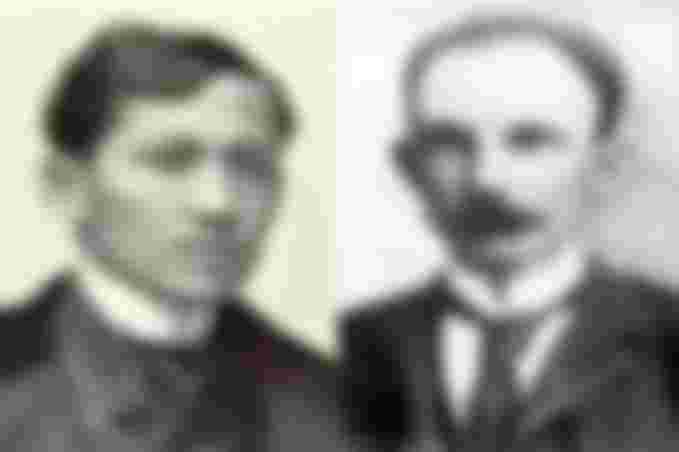THE USS INDIANAPOLIS SINKS
July 30, 1945

On this day in 1945, the Japanese Navy submarine I-58 sank the United States warship USS Indianapolis. At 12:15 am, Philippine time, two I-58 torpedoes hit the starboard or right side of the ship, and 12 minutes later the ship capsized, raised its stern, and was completely swallowed by water in the Philippine Sea. . But the ordeal of the floating crew of the USS Indianapolis did not end here. During the five days of floating at sea, they were forced to drink saltwater, which further resulted in dehydration, and worse they were attacked by sharks, and some of them also gradually died from overexposure. in the heat of the Sun and soaking in the cold sea. Others could not bear a few days of calvary at sea and also committed suicide.
Until Aug. 2, U.S. Navy anti-submarine aircraft spotted the floating crew of the sunken ship and launched a rescue operation on Indianapolis sinking survivors. An estimated 300 crew of the ship sank along with Indianapolis, while of the more than 900 people floating at sea, 316 of them were rescued.
The US Navy in those days was unaware of the tragedy that befell Indianapolis, which they thought had reached the province of Leyte in the Philippines. However, the tragedy that befell Indianapolis was kept secret from the public until August 15, 1945. Indianapolis Captain Charles McVay III was indicted in a military court, for failing to declare an "abandon ship" at the time the ship sank. the ship, and it's not sailing “zigzag” to prevent the submarine attack. Captain McVay III was convicted, and in 1968 he committed suicide at the age of 70. For the surviving Indianapolis crew, Captain McVay III's mistake was only used as an excuse to cover up the U.S. Navy's long rescue of them.
July 16, 1945, when Indianapolis was assigned a secret mission and left San Francisco, California carrying the uranium needed to develop the atomic bomb scheduled to be dropped on Hiroshima. On July 26, 1945, Indianapolis unloaded its dangerous cargo on the island of Tinian, and then sailed to the U.S. Military headquarters in Leyte to meet with the USS Idaho, and prepare for the scheduled invasion of mainland Japan.
The sinking of the USS Indianapolis is considered the greatest tragedy in U.S. Navy history. On August 19, 2017, Paul Allen's research vessel RV Petrel found the wreckage of the USS Indianapolis, in the ocean covered by the Philippine Sea at a depth of 5,500 meters.
THE EMPEROR MEIJI OF JAPAN DIED
July 30, 1912

Exactly 107 years ago, the passing of the 122nd Emperor of Japan, Mutsuhito, or better known as Meiji, was announced past midnight on this day in 1912. It was past 10:40 pm Japanese time when Emperor Mutsuhito died of complications caused by diabetes and gastroenteritis. His eldest son Yoshihito succeeded to the throne as Emperor of Japan, and Mutsuhito's remains were laid to rest at the Momoyama Imperial Mausoleum in Kyoto, Japan.
Mutsuhito was born on November 3, 1852, and was the son of Emperor Komei and Empress Asako Kujo. Mutsuhito’s time saw Japan’s status as a feudal and traditional Japanese state ruled by the Tokugawa shogunate, which later changed with the arrival of the Americans in Japan in 1853 to trade.
There are very few written records of Mutsuhito's youth except that he studied at the Palace of his father the Emperor. At the age of 15, Mutsuhito was crowned Emperor Meiji in February 1867, and with the restoration nv power of the Japanese government to the imperial family from the Tokugawa shogunate in 1868, his regime was called the Meiji Period.
The Meiji Period was the period of radical change in Japan in the political, economic, social aspects and above all was in the status of the Emperor of Japan. Emperor Meiji is considered the first Emperor of Imperial Japan. Japan embraced almost all Western influences, including the growth of industry, and military force.
With the rise of Japan’s military force, Japan was considered in those days as an emerging powerful country in Asia, and also saw Emperor Meiji’s time successful expansions of its influence in China and Korea. Its wars were also successful against the Qing dynasty of China in 1894 and Russia in 1905. Japan occupied and colonized Taiwan and Korea in 1910 and aspired to cross into China to conquer it and its natural resources. its wealth. At the turn of the 20th century, Japan was emerging during the Meiji period as a powerful empire in Asia.
THE ELECTION FOR NEW MEMBERS OF THE PHILIPPINE ASSEMBLY
July 30, 1907

The first national elections for new members of the newly formed Philippine Assembly were held on this day in 1907.
This election was from the blessing of the Philippine Organic Act of 1902, which provided for the establishment of a bicameral legislature consisting of the Philippine Commission as the Upper House and the Philippine Assembly as the Lower House.
Six political parties competed for seats in the Philippine Assembly; the Nationalist former Federalist party, the Progressive, Immediatist, Independent, Catholic party, and Philippine Independent Church. Some run without party bias.
By the end of the election, 59 Nacionalista candidates got 69.43% of the total vote, 16 or 24.67% of the total vote got Progressman, while 7.5% or five independent candidates got the vote. Overall, the Nacionalista party won the polls, and they held the largest seat in the Philippine Assembly.
The session of the Philippine Assembly first opened on October 16, 1907, where Sergio Osmeña, Sr. became Assembly Speaker, and Manuel Luis Quezon, both of Osmeña's party in the Nacionalista, became Majority Floor Leader. During the entire session of the First Philippine Assembly from 1907 to 1909, it passed more than 170 laws, including Act no. 1801 or the Gabaldon Act.
DR. JOSE RIZAL TO GOVERNOR-GENERAL RAMON BLANCO TO APPLY FOR PERMISSION TO SERVE AS A DOCTOR IN CUBA
July 30, 1896

On this day in 1896, Dr. received. Jose Rizal obtained the permission of Governor-General Ramon Blanco y Ereñas to go to Cuba to serve as a doctor of the medical corps of the Spanish army.
On December 15, 1895, at the suggestion of his Austrian friend Ferdinand Blumentriit, Dr. wrote. Rizal to Governor-General Blanco, who Rizal asked to allow him to go to Cuba, to help treat yellow fever victims in Cuba. At the same time, a revolution was taking place in Cuba against the Spanish occupation.
Aside from the permission to go to Cuba, Dapitan politico-military Ricardo Carnicero also gave Dr. Rizal's safe conduct pass ordered by Governor-General Blanco so that Rizal can return safely to Manila.
On July 31, 1896, as a result of this consent of Governor-General Blanco, Dr. permanently left his home for four years. Rizal aboard the ship España, and he arrived in Manila on August 6, 1896. There Rizal would wait for the ship to take him to Cuba, unknowingly that a revolution would break out in Manila in the next few days, and the Spanish authorities will blame its outbreak on Dr. Rizal.
References:
History.com (n.d.). Indianapolis bombed. https://www.google.com/amp/s/www.history.com/.amp/this-day-in-history/uss-indianapolis-bombed
Wikipedia (n.d.). USS Indianapolis. https://en.m.wikipedia.org/wiki/USS_Indianapolis_(CA-35)
Wikipedia (n.d.). Emperor Meiji. https://en.m.wikipedia.org/wiki/Emperor_Meiji
Wikipedia (n.d.). Philippine Assembly elections. https://en.m.wikipedia.org/wiki/1907_Philippine_Assembly_elections
Wikipedia (n.d.). 1st Philippine Legislature. https://en.m.wikipedia.org/wiki/1st_Philippine_Legislature




https://testbanks22.com/p/database-concepts-8th-edition-test-bank/